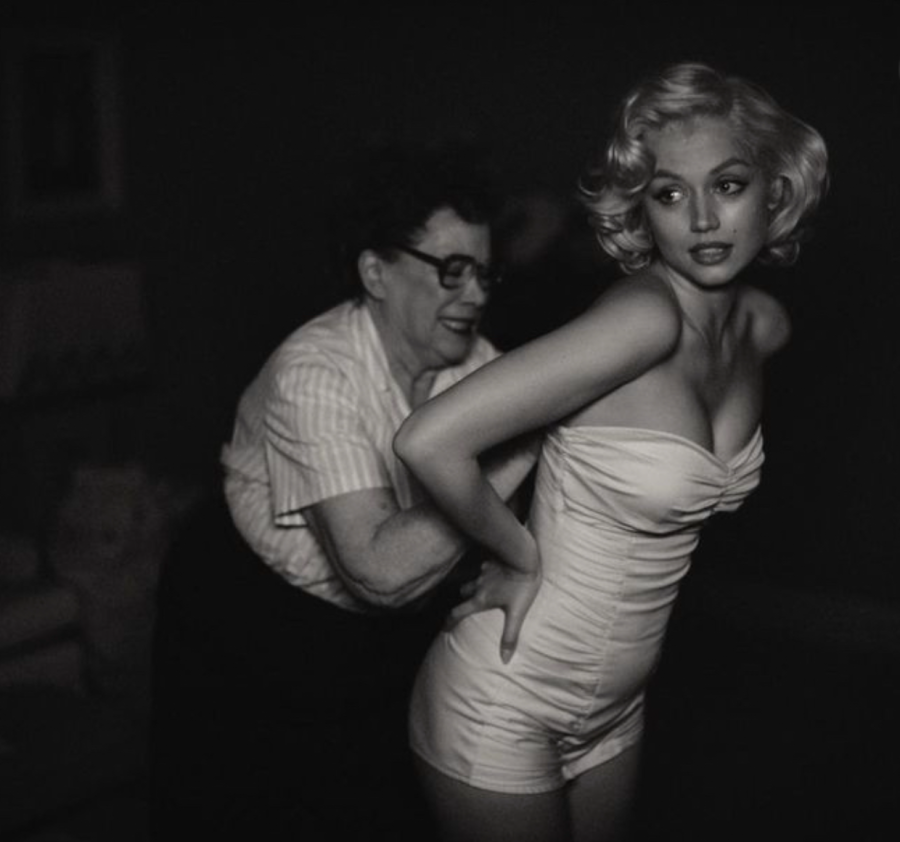“Blonde:” An Irresponsible and Violating Biopic
In the highly anticipated film, “Blonde,” the director Andrew Dominik, in conjunction with Netflix, offers a wildly violating representation of Marilyn Monroe’s life. The movie is based on the 1999 book titled the same. The book’s author, Joyce Carol Oates, called the production “a work of art” via Twitter.
Ana de Armas, a Cuban and Spanish actress, takes on the role of Monroe, which I can appreciate as a move towards inclusivity within Hollywood. Armas does an impeccable job with what she is given in the subpar production. However, while Monroe did suffer a tragic life, the film goes to grotesque ends to paint the picture of her endless trauma. Although I can recognize that the film was intended to be a fictionalized telling of Monroe’s life, the reoccurring exploitative scenes did nothing to contribute to her story other than degrade her femininity and humanity, as if she didn’t receive enough of that in her lifetime.
Besides the film being entirely too horrific to watch all the way through without skipping, some of the explicit details were not even confirmed aspects of Marilyn’s life. For example, towards the beginning of the film, Monroe (originally under the name Norma Jeane), is depicted living in a problematic household with her single mother, Gladys. While the child holds hope of her father returning, a common theme throughout the movie, the two are left isolated to fend for themselves. Gladys, in a drunken-rage, yells in a slurred manner, “It’s because of you, you’re the reason he went away,” and takes her anger about her ex-husband out on Norma, attempting to drown her in a bathtub. The chilling scene left me wondering if this really happened, and upon further research, there are no historical records that point to Monroe experiencing this event. The bathtub scene joins a wide variety of others that are mere speculation at the best. While Monroe’s troubling childhood of abuse has been confirmed by historical scholars, there were many other avenues available in portraying her tragic relationship with her mother. Again, as a fictional film there is some room for fabricated retelling to fill in gaps about the star’s life, but “Blonde” has no qualms with incorporating bent truth to a very morbid degree.
An aspect of the film that felt timely insensitive was the discourse surrounding abortion. “Blonde” depicts Monroe receiving two forced abortions and suffering a miscarriage. However, there is yet again no evidence of the star experiencing even one abortion, especially against her will. This vivid inclusion of the procedure in the film sparked a wide range of controversy, considering the political climate we find ourselves in currently in terms of abortion. The doctors are depicted as malicious actors in providing this medical service, which is a very irresponsible move on the part of Dominik, contributing to anti-abortion propaganda. According to Elle Magazine, Planned Parenthood even spoke out against the violent portrayal of abortion saying they “[respect] artistic license and freedom. However, false images only serve to reinforce misinformation and perpetuate stigma around sexual and reproductive health care.” Not only are these abortion scenes violating to Monroe and push a falsified narrative about reproductive health, but the film also goes as far to animate a CGI-talking fetus begging her to preserve its life. The fetus is depicted as a fully-formed baby while Monroe is not far into her pregnancy, painting abortion as a murderous act. Because films and media have such an impactful hand in the public’s perception of the world around them, “Blonde” and its production team had the responsibility of portraying a more accurate representation of abortion and clearly did not take it seriously.
Marilyn Monroe will forever go down as one of the most memorable faces of Hollywood for her impeccable rags-to-riches story. Her success does not undermine the traumatic events of her life, but rather serves as a testament to the perseverance she exhibited until her last tragic breaths. Media indulged in the life of Monroe while she was alive, and even more so since her passing. While some depictions have aimed at spotlighting her endurance, “Blonde” can easily fall under the category of exploitation of her story. Riddled with inaccuracy and disrespectful representation of the actress, the film would be Monroe’s worst nightmare.
The only saving grace of this film is the choice of Ana de Armas as Monroe, as she delivers intensity in her work. Picking a woman of Latinx background breaks the boundaries of white-washed Hollywood. Overall, in its nearly three-hour runtime “Blonde” entirely disrespected the life of Marilyn Monroe in the fictionalized delivery of her life, contributing to its sudden spiral out of Netflix’s Top 10.











































































































































































































